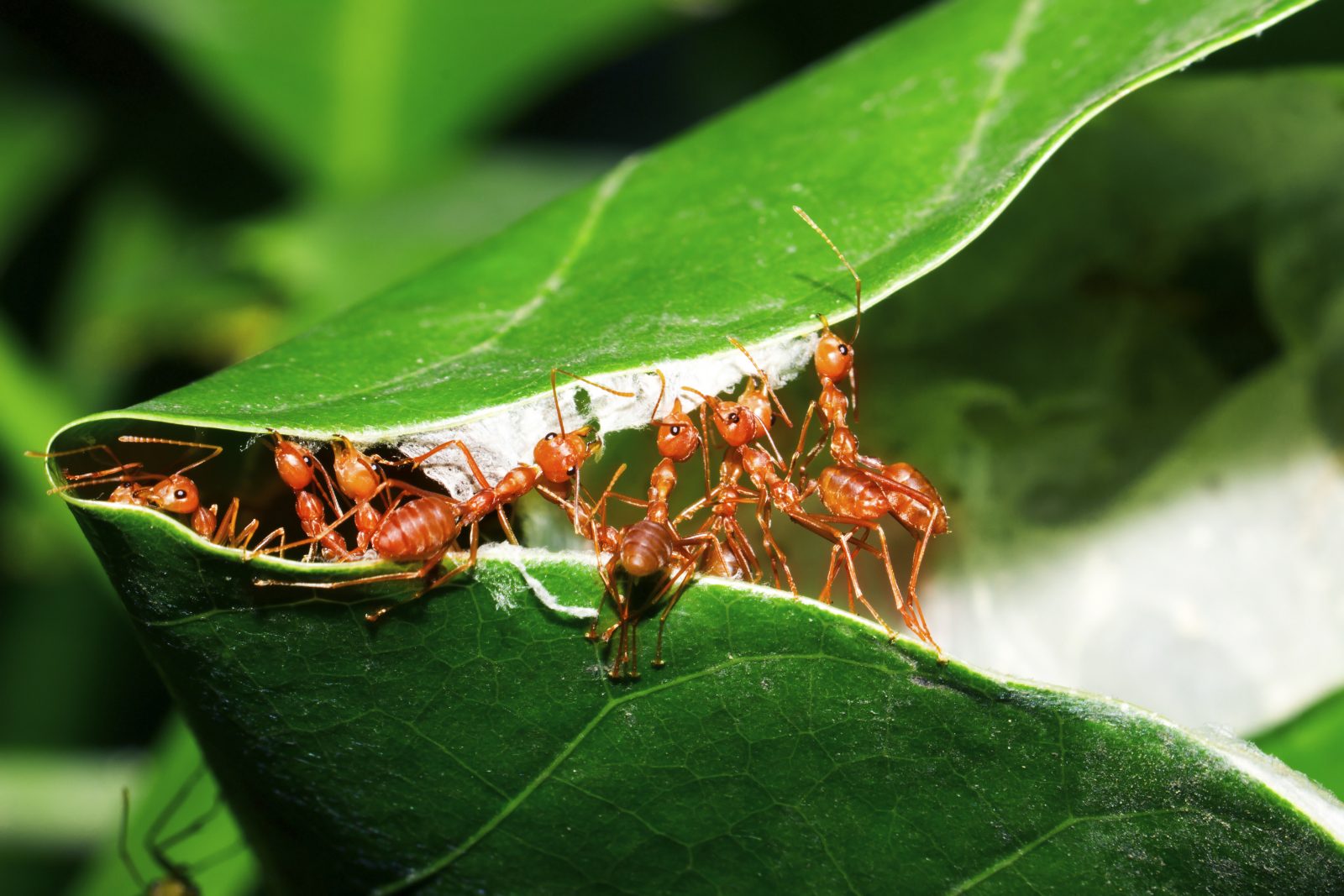


Human Skeletal Joints—Engineering Masterpieces, Pt. 2
Today’s ID the Future completes a talk by award-winning British engineer Stuart Burgess, who explains how the human ankle and wrist joints offer powerful evidence of engineering genius. Burgess is answering evolutionist Nathan Lents, who has argued that human joints are badly designed and, therefore, evidence against intelligent design and for Darwinian evolution’s blind trial-and-error process. According to Burgess, Lents ignores—and seems to be ignorant of—the many ingeniously engineered features of our joints, leading Lents to make easily refuted claims. For example, Lents says an ankle with fused bones would be a superior design to a healthy human ankle. Not if the person hopes to play squash or tackle any number of other activities that require the suppleness and responsiveness of the human ankle, Burgess notes. Burgess’s lecture was taped at the 2022 Westminster Conference on Science and Faith in the greater Philadelphia area. The conference was jointly sponsored by Westminster Theological Seminary and Discovery Institute’s Center for Science and Culture.

Behe and Ramage: Evolution’s Limits and the Fingerprints of Design
Today’s ID the Future wraps up a debate over evolution and intelligent design between Lehigh University biologist Michael Behe and Benedictine College theologian Michael Ramage. Both Behe and Ramage are Catholic, and they carry on their conversation in the context of Catholic thinking about nature and creation, in particular the work of Thomas Aquinas and contemporary Thomist philosophers. Ramage seeks to integrate his Thomistic/personalist framework with modern evolutionary theory’s commitment to macroevolution and common descent. Behe doesn’t discount the possibility of common descent but lays out a case that any evolution beyond the level of genus (for instance, the separate families containing cats and dogs) cannot be achieved through mindless Darwinian mechanisms and, instead, would require the contributions of a designing intelligence. Behe then summarizes both the negative evidence against the Darwinian mechanism of change and the positive evidence in nature for intelligent design. This debate was hosted by Pat Flynn on his Philosophy for the People podcast, and is reposted here by his permission.

Casey Luskin on Why He Favors ID over Theistic Evolution
Today’s ID the Future continues intelligent design theorist Casey Luskin’s conversation with Apologetics 315 podcast hosts Brian Auten and Chad Gross. Here in Part 2, Luskin give a peek behind the scenes of ID 3.0, the current research program inspired by the intelligent design framework. Luskin is then asked to explain his reservations about theistic evolution, and Luskin points out the evidential, rhetorical, and logical problems he sees with the brand of theistic evolution advocated by Francis Collins and Biologos. What about the future of the intelligent design movement? Luskin says he’s optimistic, both because of the exciting research and publication breakthroughs of late, and because of the many converts he’s seeing to the ID framework. According to Luskin, many of these recruits remain behind the scenes to avoid reprisals from opponents of ID in positions of power, but some top scientists have come out publicly in support of intelligent design, including at least one Nobel Laureate. This episode is presented here with permission from Apologetics 315.

Casey Luskin and Adam Shapiro Debate Intelligent Design, Pt. 2
This ID the Future continues the debate between design theorist Casey Luskin, an editor of The Comprehensive Guide to Science and Faith, and science historian Adam Shapiro, co-author of Science and Religion: A Very Short Introduction. Justin Brierley, of the popular British debate program Unbelievable?, hosts. In this second half of the conversation, Shapiro argues that intelligent design’s popularity seems to have waned. Casey Luskin counters, arguing that the number and frequency of New York Times articles on ID is a superficial metric and that the ID research program is exploding, with the number of peer-reviewed ID papers growing every year, and the number of interested graduate students, ID hubs, and conferences expanding around the world, including ID conferences attended by high-level scientists, including Nobel Laureates. Luskin and Shapiro also discuss religious and academic freedom as it relates to the teaching of evolution and intelligent design in the classroom. Shapiro is actually more sanguine than Luskin about the freedom of high school biology teachers to teach intelligent design. Luskin, who has both a PhD in geology and a law degree, strongly advises high school biology teachers in public schools against teaching ID in the classroom. Instead, he says, the better and legally safer approach is to teach evolutionary theory comprehensively, covering both the evidence for it but also some of the evidence in the peer-reviewed literature against it. Luskin and Shapiro also part company on the nature of the intelligent design argument, with Shapiro suggesting that in practice it often amounts to a presenter highlighting some amazing feature in biology and then giving glory to God. Luskin pushes back, reiterating that intelligent design is an argument based on positive evidence, and is an argument to the best explanation–intelligent design–one that employs standard methods of scientific reasoning. This program is presented here with permission of Justin Brierley. To see this and other Unbelievable? episodes, go here. The first half of this conversation can be found here.

Jay Richards on the Art of Answering Theistic Evolutionists
On today’s ID the Future, philosopher Jay Richards offers advices on engaging with evolutionists over the issues of origins, evolution, and intelligent design. In his conversation with host Casey Luskin, he says that if someone tells you he’s a theistic evolutionist, first find out what he means by theism and evolution. The latter term, in particular, can have widely varying meanings, and the average lay persons who see themselves as theistic evolutionists likely see God as actively and creatively working in the history of life to steer evolutionary outcomes, including the origin of humanity. What they may not realize is that such a view takes them well outside the bounds of what academic theistic evolutionists generally mean by the term evolution, particularly those theistic evolutionists who publicly defend evolutionary theory generally. Richards says that these academics hold to an internally incoherent view in many cases, and he encourages intelligent design proponents to surface that incoherence whenever the opportunity arises. For those who are willing to consider the evidence for intelligent design, Richards lists what he sees as the most rhetorically effective lines of evidence to present to people. The occasion for the conversation is Richards’ two chapters in the recently released Harvest House anthology, The Comprehensive Guide to Science and Faith.

Jaw Dropping: Nature’s Irreducibly Complex Linkage Mechanisms
On today’s ID the Future, Bristol University engineer Stuart Burgess dives deeper into the engineering marvels of such sea creatures as the parrotfish, sling-jaw wrasse, mantis shrimp, and the deep sea dragonfish, with a particular focus on the amazing linkage mechanisms found in these creatures. Burgess says these mechanisms are extraordinary examples of engineering prowess, and they are irreducibly complex, thereby posing a challenge to modern evolutionary theory. He and host Eric Anderson also discuss the engineering sophistication of muscles, with a specific look at the human bicep and how the muscle and the brain work together. Burgess is an expert on linkage mechanisms. His design work in this area helped Great Britain’s cycling team win gold in the two most recent Summer Olympics, and his gearboxes can be found on the European Space Agency’s large Earth-observation satellites. The occasion for today’s discussion is Burgess’s recent scholarly paper in the journal Bioinspiration & Biomimetics.

Animal Algorithms Webinar Pt. 2: Author Q&A
Today’s ID the Future is Part 2 of a recent live webinar with Eric Cassell fielding questions about his new book, Animal Algorithms: Evolution and the Mysterious Origin of Ingenious Instincts. He and host Casey Luskin explore the engineering wonders of web-spinning spiders and their extraordinary silk, and the challenge of transforming solitary insects into social insects (with their complex and interdependent caste systems) via a blind step-by-step evolutionary process, and the many thousands of genetic changes required. What does Cassell consider the best explanation? He invokes design theorist William Dembski’s work with No Free Lunch theorems to argue that blind processes are a no-go for explaining their origin. From there Luskin opens the webinar up to questions from the live audience. Have researchers tried to locate these algorithms in the DNA of the animals exhibiting complex programmed behaviors? Do any of the insects Cassell discusses use pheromones and, if so, how? What do biologists make of the apparently purposive nature of all these different kinds of complex programmed behaviors? Cassell fields these and other questions and says that more progress would be possible if not for the fact that so many scientists are infected with what he terms teleophobia — an unwillingness to recognize evidence of teleology and purpose in biology. Another question concerns examples of striking convergence among social insects and gifted animal navigators. Cassell argues that although the evolutionary community waves the term “convergent evolution” at such instances, they actually pose a powerful challenge to evolutionary theory.

Amazing Insect Colonies vs. Evolution
On today’s ID the Future, Animal Algorithms author Eric Cassell delves into another fascinating portion of his new book, the programmed social behaviors of colony insects and the challenge these instinctive behaviors pose for modern evolutionary theory. Cassell and host Robert J. Marks discuss the complex caste system of these colonies, the impressive signaling systems they use to communicate, and how technologists study these tiny-brained creatures to learn tricks for developing and improving drone swarm technology. How could a mindless evolutionary process have evolved these sophisticated colonies, where various castes appear essential to the functioning and survival of the colony, and possess their division-of-labor skills instinctively? Some colony members also behave altruistically, a fact that Charles Darwin himself conceded posed a challenge to his theory. And what about all the growing number of orphan genes researchers are finding among colony insects—genes without any apparent evolutionary ancestry in the history of life? This too, Cassell argues, poses a major challenge to evolutionary theory. Cassell argues that underlying these complex instinctive social behaviors are complex algorithms not unlike those we find in computers; and, as he argues in the book, the best explanation for their origin is intelligent design. Learn more about the book, read the endorsements from a range of scientists and engineers, and pick up your copy here.

New Book Spotlights High Tech Animal Navigation
Today’s ID the Future spotlights the new book Animal Algorithms: Evolution and the Mysterious Origin of Ingenious Instincts. The author, Eric Cassell, joins host and Baylor computer engineering professor Robert J. Marks to discuss the groundbreaking book and, in particular, the chapters on some of the animal kingdom’s most stunning navigators—the arctic tern, homing pigeons, the monarch butterfly, and the desert ant, among others. Cassell has degrees in biology and engineering, and he draws on these and his decades of professional expertise in aircraft navigation systems to show that these creatures instinctively employ navigational technologies that humans have only recently mastered. According to Cassell, their skills are driven by sophisticated algorithms embedded in their brains. But what created these algorithms in the first place? He argues that mindless evolution is a poor candidate for the job. A better candidate, he suggests, is the same cause that builds sophisticated algorithms today—intelligent agency. Tune in as Cassell and Marks touch on everything from magnetic, sun, and celestial navigation to chemotaxis, dead reckoning, spherical geometry, great circle routes, neural networks, and … Viking sun stones. Read the enthusiastic endorsements, and pick up your copy of the book here.